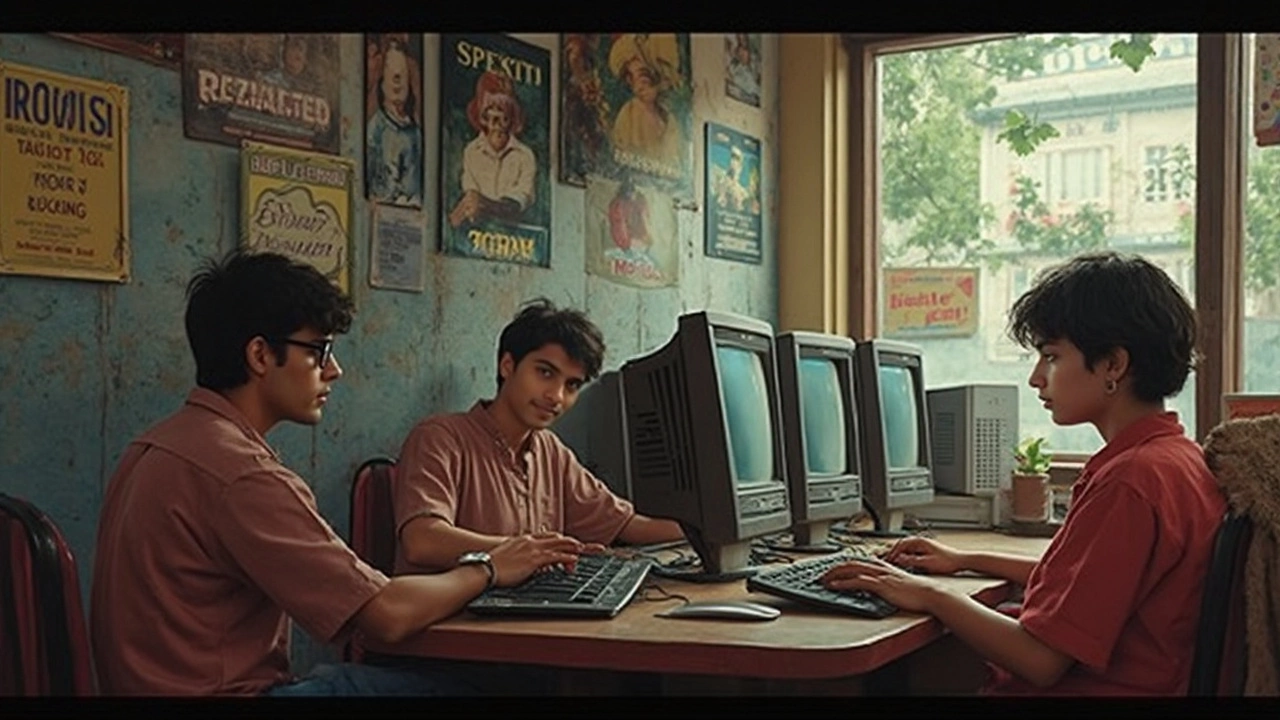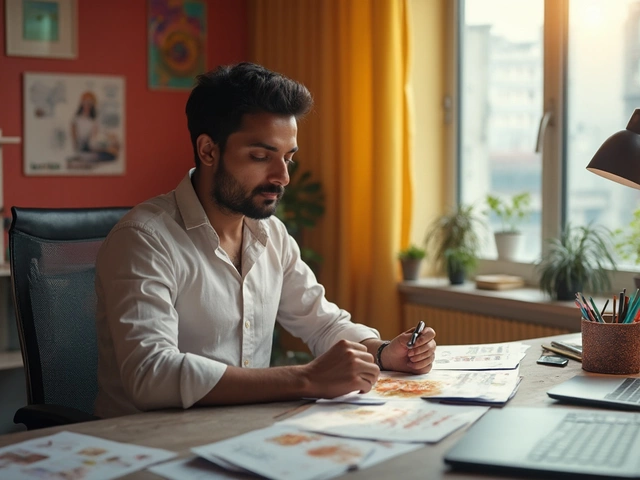A lot of people think blogging is a recent thing in India. Actually, it kicked off way earlier than most imagine—back when internet speeds were crawling and Orkut was the big social network. If you've ever wondered about the first Indian blogger, you're not alone. There are mixed opinions and some fake facts floating around.
The name Amit Agarwal pops up all over the place, and for good reason. In 2004, he started Labnol (Digital Inspiration), a tech blog that exploded in popularity. He made it his full-time gig, which was totally unheard of in India at the time. Before him, a few hobbyists messed around with personal sites or “web diaries,” but nobody treated it seriously or covered tech like Amit did.
Thinking about starting your own blog? Learning about the first Indian blogger’s approach can give you a head start—he focused on simple explanations, helpful guides, and tech tips that actually worked. If you stick to solving real problems for readers, you might be surprised how far your blog can go. Curious how blogging evolved and what changed since 2004? Let’s break it down step by step.
- The Dawn of Indian Blogging
- Amit Agarwal: The Pioneer
- How Blogging Transformed in India
- Tips for Aspiring Bloggers
The Dawn of Indian Blogging
Back in the early 2000s, the Indian internet scene was practically on life support. You had dial-up connections that dropped if someone picked up the landline, and most people didn’t even have email. Still, a few curious minds wanted a space to share thoughts online. These early experiments started what we now call blogging in India.
The big names of that time were mostly tech geeks, college students, or young professionals. Their blogs looked basic—a lot of plain text, maybe a grainy photo if you were lucky. Sites like LiveJournal, Blogger, and TypePad made it fairly easy for anyone to launch a personal blog. But almost nobody saw it as a career move—or even thought about making money from it. Blogging was just a digital notepad for rants, poems, tech ramblings, or movie reviews.
Blogger.com, owned by Google, kicked open the doors in 1999. Indians caught on a few years later, mostly after 2002, as bigger cities got faster internet. Major Indian blogs in the beginning had audiences that numbered in the dozens, not lakhs. But word spread fast in tech circles; people liked the idea of first Indian blogger as a tech whiz or someone leading the charge for personal publishing.
Here’s a quick look at the environment Indian bloggers faced in those early days:
| Year | Internet Cafes (approx.) | Average Internet Speed (kbps) | Blogging Platforms Popularity |
|---|---|---|---|
| 2001 | Under 5,000 | 32-56 | Blogger, LiveJournal |
| 2003 | 9,000+ | 56-64 | Blogger gaining steam |
| 2005 | 12,000+ | 256 | WordPress enters the mix |
If you’re thinking, “Wow, those numbers are low,” you’re right! But that’s what made even small blogs special—posting anything felt new. And because there wasn’t much competition, early bloggers had a real shot at building a name for themselves.
Quick tip: if you want to read super-old blog posts, tools like the Internet Archive’s Wayback Machine let you travel back in time and see what those early Indian blogs looked like. It’s a wild ride.
Amit Agarwal: The Pioneer
If you search for the first Indian blogger, Amit Agarwal is almost always the name you’ll find. He started his blog Digital Inspiration (Labnol) way back in 2004, at a time when most Indians were still figuring out dial-up connections and tech help meant calling your cousin. Amit quit his corporate IT job in the US to return to India and started blogging full-time—something pretty wild in those days.
His approach was straight to the point: make tech simple for everyone. Whether you wanted to automate boring tasks or fix a Windows problem, chances are he already had a guide written for it. It wasn’t just about reviews or news. Amit’s tutorials and how-tos made tech less scary for all kinds of readers.
| Year | Milestone |
|---|---|
| 2004 | Started Digital Inspiration (Labnol) |
| 2007 | First Indian professional tech blogger |
| 2010 | Crossed 50 million pageviews |
| 2014 | Recognized by international platforms for useful content |
Digital Inspiration was among the first Indian blogs to show you could actually earn a living online. Instead of just sharing stories from daily life, Amit monetized his blog with ads, sponsored posts, and partnerships. It set a clear path for other Indian bloggers to follow. His transparency about blogging as a career made tons of people take online writing more seriously—they started believing it wasn’t just a “timepass.”
If you want to start a blog like Amit, focus on what real people struggle with. Solve problems, update your solutions as tech changes, and keep the writing simple. Regular updates and clear explanations helped Amit stand out, and those basics still work today if you want to be noticed in India’s crowded blogging world.

How Blogging Transformed in India
Blogging in India has gone from being a quiet side project to a powerful way to share ideas, grow a career, and even earn a living. Back in the mid-2000s, most people blogged for fun. Platforms like Blogspot and later WordPress made it easy for anyone with a computer and an internet connection to start writing. But it wasn’t until a few pioneers, especially Amit Agarwal, began showing that you could turn a blog into a real business, that things really took off.
Once broadband started reaching more cities around 2007, suddenly more readers and writers jumped into the blogosphere. The topics exploded—tech, gadgets, food, travel, finance, fashion. Some of these bloggers turned into mini-celebrities in their niches. And as brands noticed this, they started reaching out to bloggers for reviews, shoutouts, and promotions.
Check out how the scene grew over time:
| Year | Key Event |
|---|---|
| 2004 | Amit Agarwal launches his tech blog, Labnol |
| 2007 | Blogging communities like IndiBlogger and BlogAdda appear |
| 2010 | Brands start sponsoring blog posts, real money starts coming in |
| 2015 | Travel, food, parenting, and fashion blogs surge in popularity |
| 2020+ | Short-form blogs and vlogs (Instagram Reels, YouTube) take off |
There are some key reasons why Indian blogging blew up:
- Cheap smartphones and cheaper data plans made reading and writing blogs easy for millions.
- Social media gave bloggers a bigger voice and helped them reach a much wider audience.
- Google AdSense, affiliate links, and brand deals turned blogs into decent money makers for top creators.
Right now, having a first Indian blogger story is cool, but standing out really comes down to building trust with Indian readers and keeping it real. Anyone can start, but sticking with it and helping your audience is what makes a blog last.
Tips for Aspiring Bloggers
Jumping into the world of blogging in India is pretty exciting right now. With over 800 million internet users in the country as of early 2025, your future readers are already online—and the competition is growing every day. But before you hit 'publish' on your first post, there are a few things you should know.
- first Indian blogger isn’t just a cool label. It’s a reminder that blogging is about being first to share your voice or knowledge. Pick topics you care about. If you’re bored writing it, folks will be bored reading it.
- Stay consistent. According to a 2024 Indian blogging survey, 67% of successful bloggers post at least once a week. The more you post, the faster you grow.
- Don’t ignore SEO. Simple keyword research can make the difference between five readers and five thousand. Use free tools like Google Keyword Planner or Ubersuggest. Stick to easy keywords at first and build from there.
- Pick a blogging platform you can grow with—WordPress is still the most popular in India, handling over 60% of top Indian personal blogs. But if you want just simple and quick, Blogger is fine too.
- Engage with your audience. Reply to comments, join relevant Telegram or WhatsApp groups, and actually listen to feedback. People come back when they feel heard.
- Don’t think you need to copy western blogs. Indians love local flavor—write with your real experiences, local words or references when it feels right.
Here’s a quick look at how Indian bloggers are seeing results:
| Hours Spent Weekly | Average Monthly Views | Blog Income (Range INR) |
|---|---|---|
| 5-10 | 1,000 - 10,000 | 0 - 2,000 |
| 11-20 | 10,000 - 50,000 | 2,000 - 25,000 |
| 20+ | 50,000+ | 10,000 - 1,00,000+ |
One last thing—don’t get discouraged if your blog doesn’t take off overnight. The first Indian blogger didn’t get famous on day one either. Just be patient and focus on being helpful. That's what makes a blog stand out, whether it's your first post or your hundredth.






Written by Arjun Mitra
I am an IT consultant with a keen interest in writing about the evolution of websites and blogs in India. My focus is on how digital spaces are reshaping content creation and consumption. I aim to provide insights and strategies for those looking to thrive in the digital landscape.
All posts: Arjun Mitra